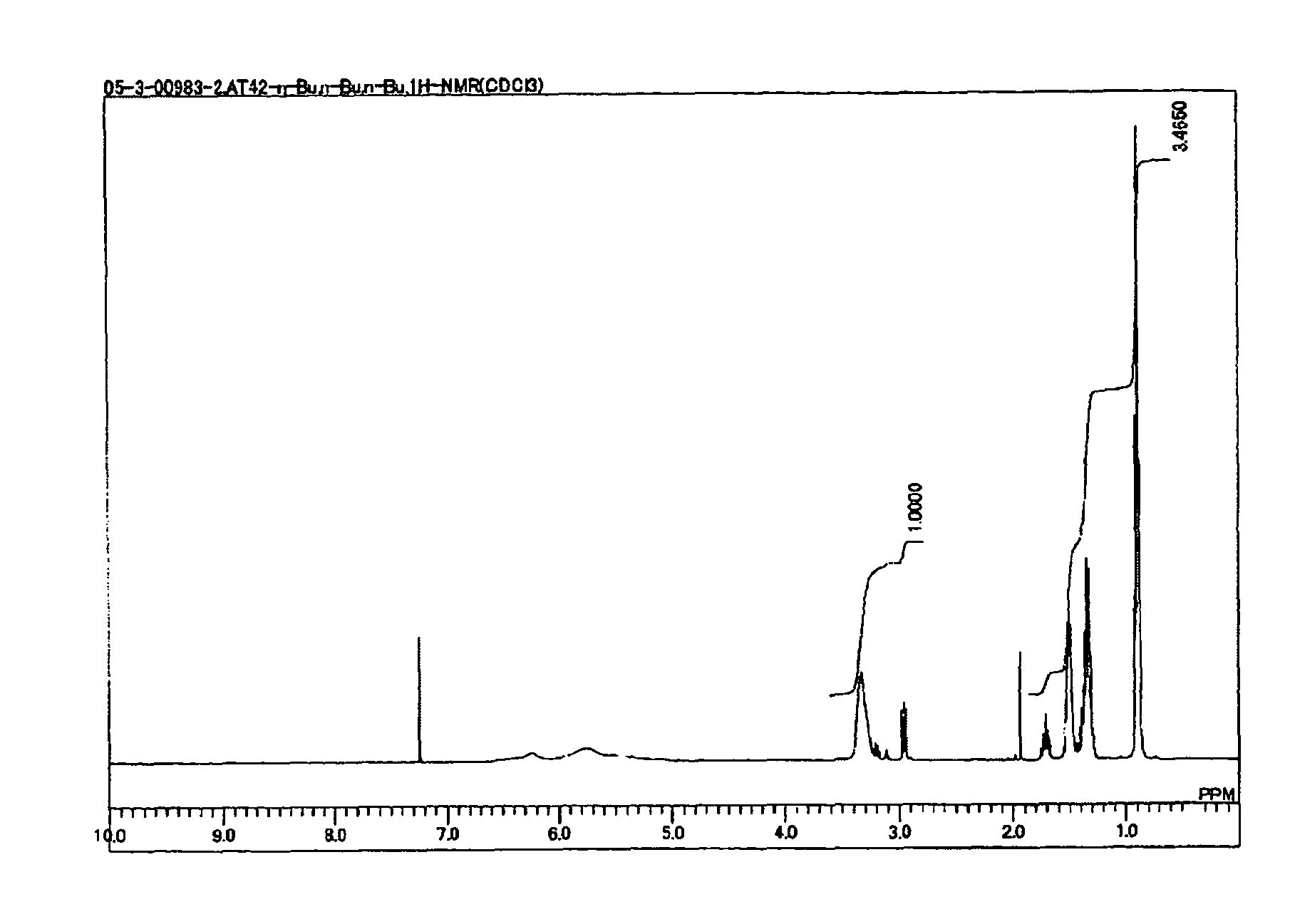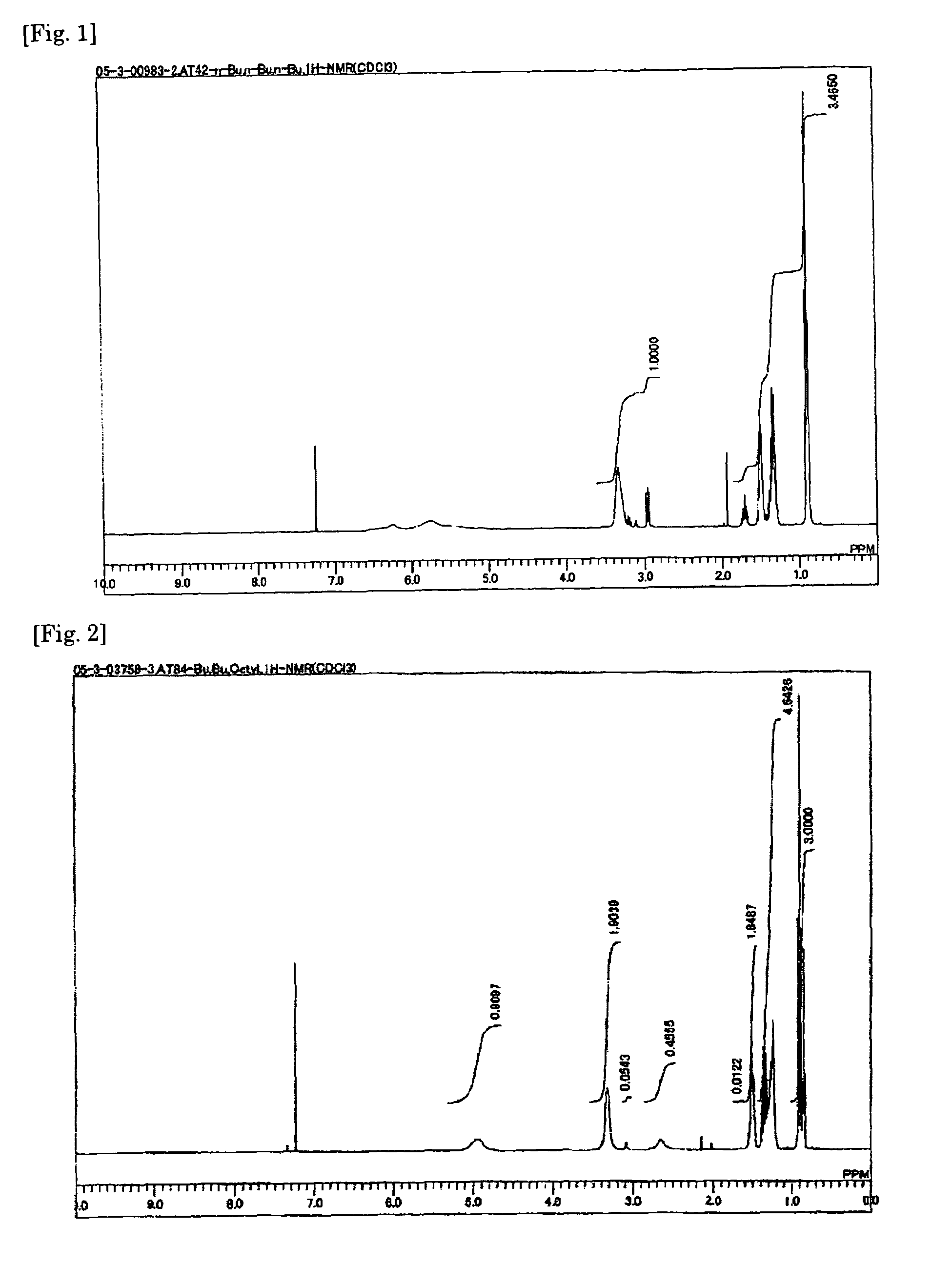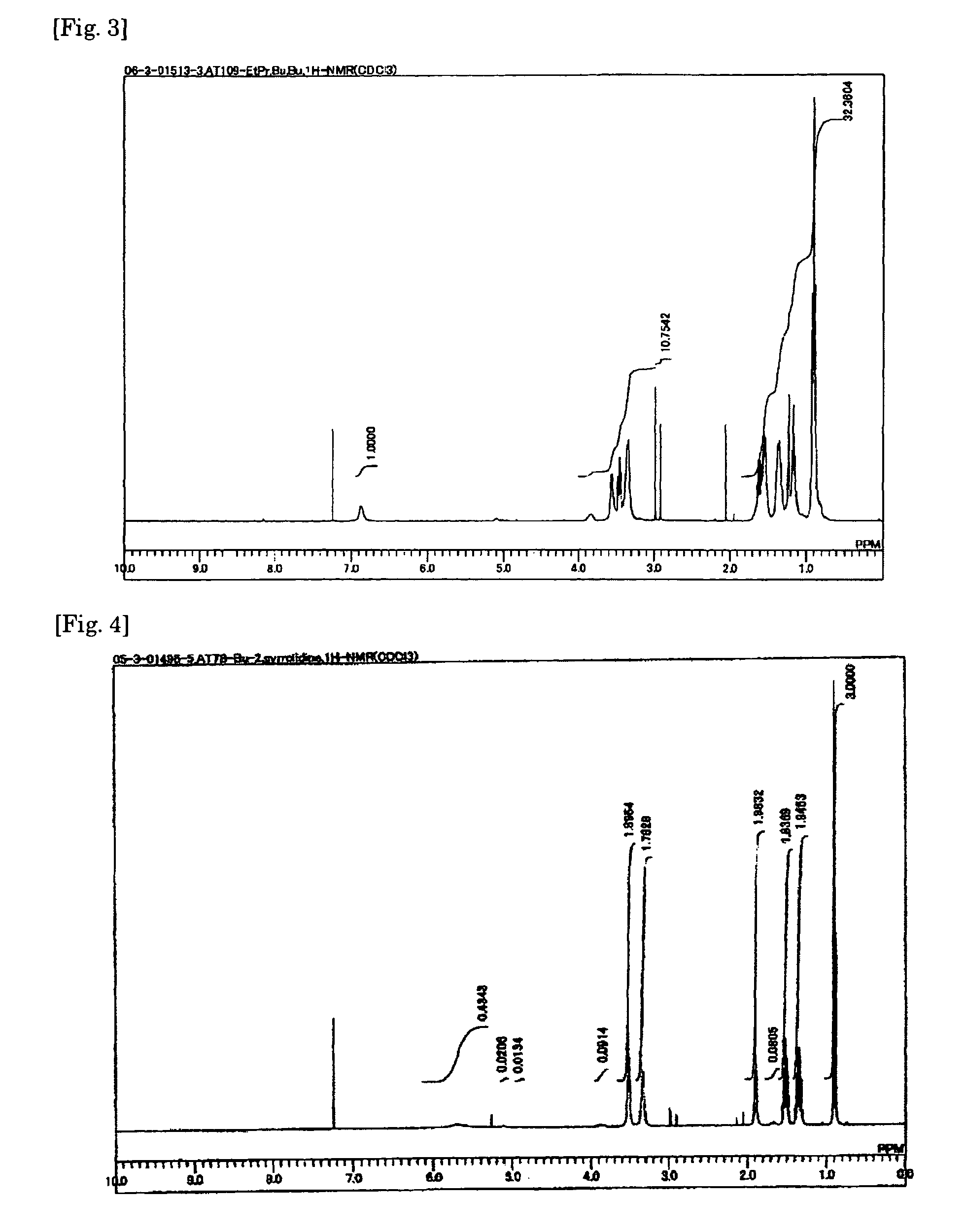Proton-conducting compound and proton-conducting polymer
a proton-conducting polymer and proton-conducting technology, applied in the field of proton-conducting polymer and proton-conducting compound, can solve the problems of inability to provide a substantial solution to the problem of providing proton conductivity without, inability to use in a dry condition, and inability to meet the requirements of hydrogen fluoride treatment, etc., to achieve the effect of improving heat stability and conductivity
- Summary
- Abstract
- Description
- Claims
- Application Information
AI Technical Summary
Benefits of technology
Problems solved by technology
Method used
Image
Examples
example 1
[0117]A solution of 150 millimoles of n-butylamine in 50 ml of dimethylacetamide was prepared and cooled to 0° C. To this solution was added at 0° C. a solution of 250 millimoles of diisopropylethylamine and 50 millimoles of N,N′-dibutyl-6-chloro-[1,3,5]triazine-2,4-diamine in 50 ml of dimethylacetamide, the resulting solution was heated under reflux for 4 hours, then cooled to room temperature, and the solvent was distilled off by an evaporator. The reaction mixture was then isolated and purified by silica gel column chromatography to give N,N′,N″-tributyl-[1,3,5]triazine-2,4,6-triamine as an oily substance. The result of 1H-NMR analysis is shown in FIG. 1.
[0118]1H-NMR (CDCl3): 4.80 (br, 3h), 3.34 (br, 6h), 1.51 (m, 6h), 1.35 (m, 6h), 1.35 (m, 6h), 0.90 (m, 9h)
[0119]To a methanol solution of 10 millimoles of bis(trifluoromethanesulfonyl)imide was added 10 millimoles of N,N′,N″-tributyl-[1,3,5]triazine-2,4,6-triamine and stirred at room temperature. After 30 minutes, the solvent was...
examples 2-6
[0120]The procedure of Example 1 was repeated with the exception of using n-octylamine, ethylpropylamine, pyrrolidine, morpholine, ethanolamine, or diethylamine in place of n-butylamine and the corresponding melamine compound obtained was converted to its bis(trifluoromethanesulfonyl)imide salt. The chemical formula of the melamine compound, appearance of the salt, and proton conductivity are shown in Table 1.
[0121]
TABLE 1Appearanceof saltProtonMelamineat roomconduc-Examplecompoundtemperaturetivity2oily3 mS / cm3oily7 mS / cm4oily6 mS / cm5oily5 mS / cm6oily5 mS / cm7oily7 mS / cm
example 8
[0122]A solution of 150 millimoles of n-butylamine in 50 ml of dimethylacetamide was prepared and cooled to 0° C. To this solution was added at 0° C. a solution of 250 millimoles of diisopropylethylamine and 50 millimoles of N,N′-diethyl-6-chloro-[1,3,5]triazine-2,4-diamine in 50 ml of dimethylacetamide, the resulting solution was heated under reflux for 4 hours, then cooled to room temperature, and the solvent was distilled off by an evaporator. The reaction mixture was then isolated and purified by silica gel column chromatography to give N,N-diethyl-N″-n-butyl-[1,3,5]triazine-2,4,6-triamine as an oily substance.
[0123]To a methanol solution of 10 millimoles of bis(trifluoromethanesulfonyl)imide was added 10 millimoles of N,N-diethyl-N″-n-butyl-[1,3,5]triazine-2,4,6-triamine and stirred at room temperature. After 30 minutes, the solvent was distilled off and the corresponding bis(trifluoromethanesulfonyl)imide salt was obtained as an oily substance. The proton conductivity of this ...
PUM
| Property | Measurement | Unit |
|---|---|---|
| temperature | aaaaa | aaaaa |
| temperature | aaaaa | aaaaa |
| temperature | aaaaa | aaaaa |
Abstract
Description
Claims
Application Information
 Login to View More
Login to View More - R&D
- Intellectual Property
- Life Sciences
- Materials
- Tech Scout
- Unparalleled Data Quality
- Higher Quality Content
- 60% Fewer Hallucinations
Browse by: Latest US Patents, China's latest patents, Technical Efficacy Thesaurus, Application Domain, Technology Topic, Popular Technical Reports.
© 2025 PatSnap. All rights reserved.Legal|Privacy policy|Modern Slavery Act Transparency Statement|Sitemap|About US| Contact US: help@patsnap.com



